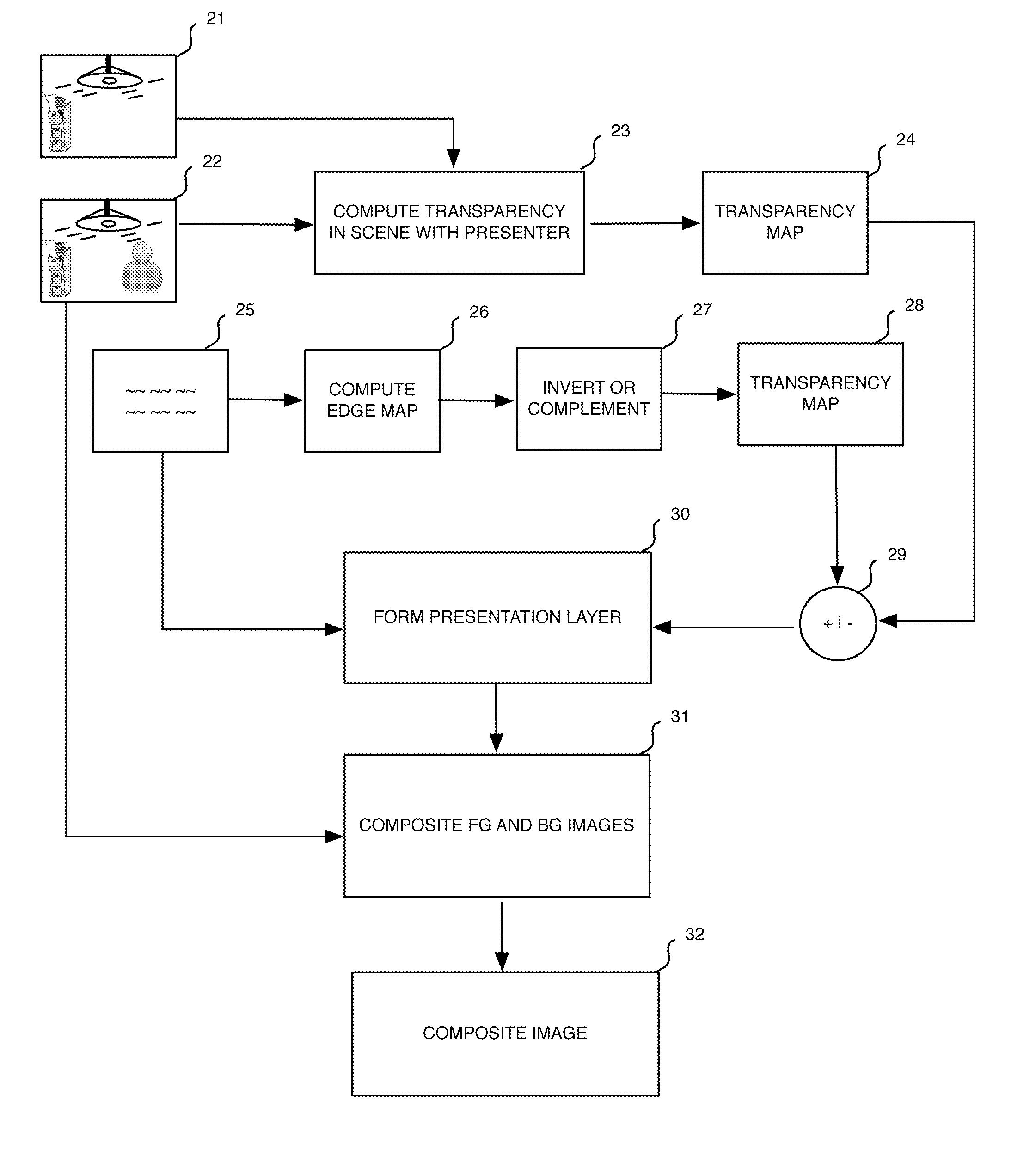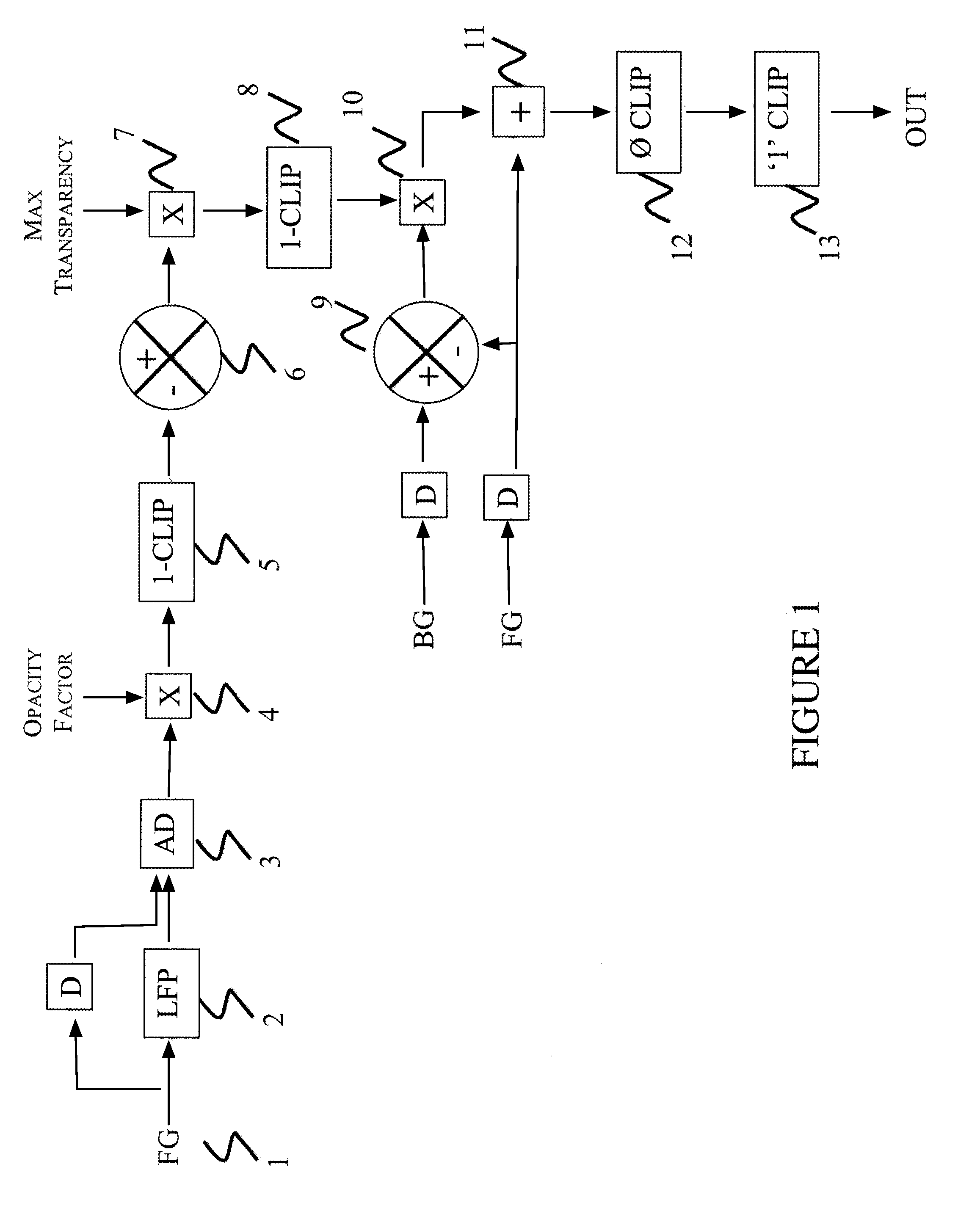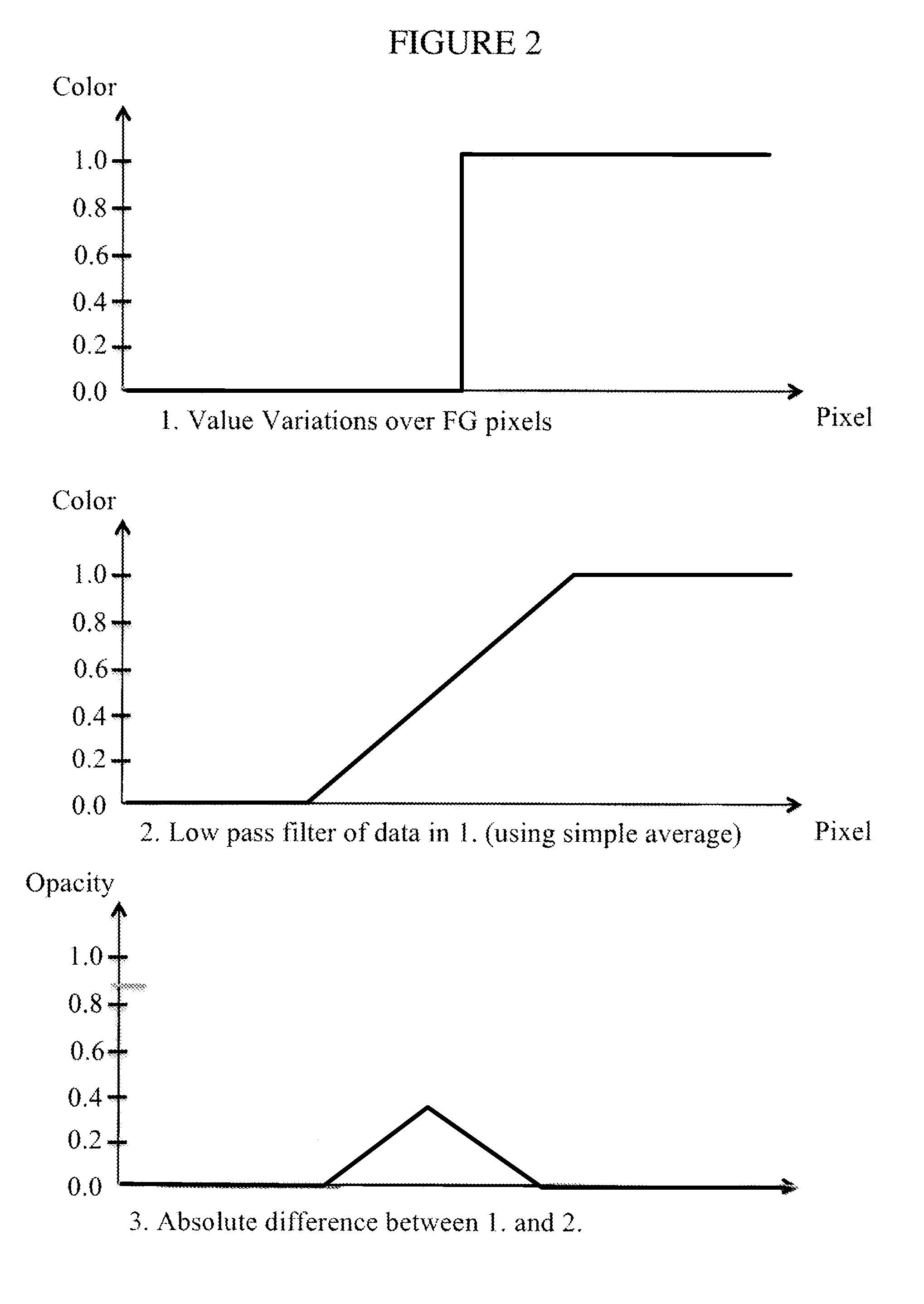Method for preventing selected pixels in a background image from showing through corresponding pixels in a transparency layer
- Summary
- Abstract
- Description
- Claims
- Application Information
AI Technical Summary
Benefits of technology
Problems solved by technology
Method used
Image
Examples
Embodiment Construction
[0027]In the one embodiment, the matte is formed as follows.[0028]Blur a copy of the foreground image horizontally using a selected blur window length.[0029]Blur the result vertically using a selected blur window length.[0030]Compute the color or brightness difference between each foreground pixel and the corresponding pixel in the blurred image.[0031]Compute the magnitude or absolute value of this difference for each pixel.[0032]Determine or select a threshold on this magnitude, above which an edge is to be considered definite.[0033]Divide this magnitude by the threshold, resulting in a value range from 0.0 to 1.0.[0034]Clip resulting values that are greater than 1.0, to 1.0.[0035]Compute the complement of the result for each pixel. This is the matte or transparency level for each pixel.[0036]A further optional step would be to multiply the matte computed to this point by a scale factor smaller than 1.0. This results in limiting the level of transparency over the entire foreground,...
PUM
 Login to View More
Login to View More Abstract
Description
Claims
Application Information
 Login to View More
Login to View More - R&D
- Intellectual Property
- Life Sciences
- Materials
- Tech Scout
- Unparalleled Data Quality
- Higher Quality Content
- 60% Fewer Hallucinations
Browse by: Latest US Patents, China's latest patents, Technical Efficacy Thesaurus, Application Domain, Technology Topic, Popular Technical Reports.
© 2025 PatSnap. All rights reserved.Legal|Privacy policy|Modern Slavery Act Transparency Statement|Sitemap|About US| Contact US: help@patsnap.com



